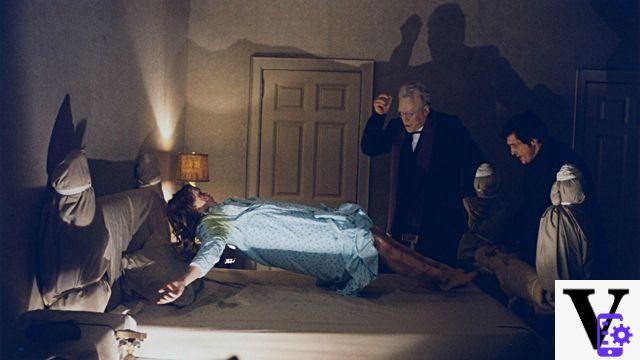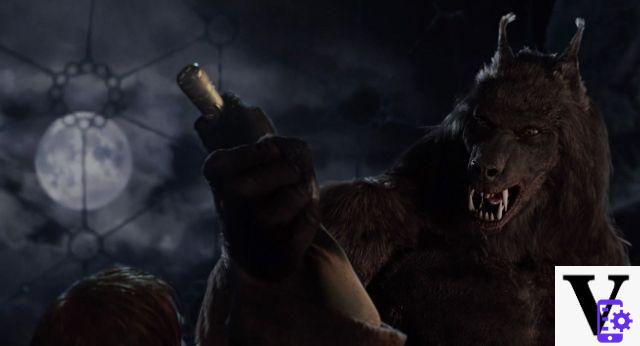Have you ever wondered which ones technologies they hide behind horror movie? How does a film like this convey thatdistressing sense of uneasiness that continues to bother us even after the end of the film?
Let's analyze together the special effects and technologies that are the basis of every self-respecting horror film and let's try to understand if the modern ones have been revolutionary or not.
Technologies in horror films: what is the purpose of such a film?
There is one simple element that makes a horror movie great. Many would say fear, and they are partly right, but I think the main constant is anguish mixed with anxiety. That sense of uneasiness that pervades us for the duration of the film, something more prickly than fear, more durable.
Then there is fear, but it must be specific. It must be something capable of calcification the viewer while watching the film and it is not easy to obtain a similar result.
A good horror movie must be intelligent, characterized by a tense atmosphere, original but above all it must convey those feelings we have talked about. Thanks to the various technological advances, directors have more weapons at their disposal to be able to create excellent horror films and more methods to frighten and distress the viewer, but will they be enough?
At the beginning making a horror film was not so simple: the special effects available to the directors were practically nil and they had to make do with effective tricks and devising methods for don't make them look too fake.
Despite the lack of certain means that we have today, this has not stopped directors from creating masterpieces that still today are not contaminated by remakes or the like.
An example is theExorcist, which I personally regard as the best horror movie Of all times.
Past and present in comparison

I was curious to know how some special effects were made in 1973 and I was completely amazed by what I read. All the special effects in the film were made "by hand".
For example, think of the scene where we see words appear on Regan's body, as if someone were writing them from inside his body.
In a nutshell the manufacturers have made a cast of his stomach and they used gods cleaning solvents to write the words. They later recorded the scene and re-recorded it on the contrary, so that it felt real.
Let's say the whole film is based on a series of home tricks and shots that make it all real. They were simply tricks from the point of view of makeup covering then fake scars, contact lenses to make it look like the girl was actually possessed and tricks of the trade.
Let's think about the exorcism scene, when the room is completely frozen. As I understand it, William Friedkin, the director, made life difficult for the cast and crew during filming. In this case because he actually made the entire set freeze to record the scene. All of this however made that particular sequence even more disturbing.
The famous scene of Regan turning his head 360 °? Simple! A rubber mannequin with the likeness of Linda Blair, the main actress. And it all seemed real thanks to a excellent use of lighting of the set.
The vomiting sequence, on the other hand, was carried out thanks to a hidden tube and attached to Linda's chin spreading green slime. A slime that was really just pea soup.
This scene, among other things, was shot once. In fact, the director had not told Jason Miller, the priest, the detail of the vomit: at the moment of shooting, therefore, his reaction was like this: authentic e disgusted, which was perfect.
No CGI, no technology, yet it remains the best horror movie ever.
Technologies in Horror Movies: Was CGI Revolutionary or Not?

In the XNUMXs there was the advent of CGI (computer-generated imagery), a technique used in the field of 3D computer graphics for the rendering of digital special effects of films, video games, commercials and visual graphics applications.
The spread of CGI has allowed directors and producers to realize scene surreali and that before they could only imagine. We pass by realistic werewolves come in Van Helsing (2004), monsters made only of skin as in Resident Evil (2002) until realizing hellish scenarios come in Silent Hill (2006).
This technique has been revolutionary and useful for many genres, mainly fantasy e science fiction. For the horror genre, instead? The question is quite complicated but we will try to figure it out.
As always, I am honest with you. There are few horror films that have really given me anguish and all that have managed to do so are old films or where the CGI is little present. The first example, and we talked about it before, is The Exorcist followed by the Trilogy of Terror from 1975 and directed by Dan Curtis.
There are no special effects in this film. In the third episode in particular, we only have one wooden figurine - a damned statuette - placed in various positions by the producers and Karen Black, an actress who is made up according to the scene. Nothing more.
Other examples are The Ring e The Grudge - I'm talking about the original films - that if we go to analyze specifically, they only count make-up on the actors and purely sound effects.
Then there are films like Van Helsing, Resident Evil or Silent Hill which, although they are not scary, have been made very well and with excellent special effects. The problem with CGI with horror movies, though, is that does not seem to be suitable for this genre.
Nowadays we are more concerned with making the beheading of any real person look like without dwelling on meaning that the film wants to convey. Similar film techniques have undoubtedly revolutionized horror cinema. First of all because the yield of the film is very real and also because I think the work done by producers and directors has been simplified.
However, despite this huge breakthrough in technology, something is missing. Missed the true essence of horror movies, the meaning they must convey.
Simplicity surpasses technology

The discussion is very broad, the points to be analyzed are many and the time available to us is short. I believe that CGI is a technique that has allowed you to give vent to your creativity in many ways.
Films like The Lord of the Rings, Jurassic Park or Titanic are built on this technique and have become real masterpieces, the only problem is that they totally detach themselves from our topic.
Or, I'm not horror.
The best films of this genre, if we analyze them step by step, are all old-fashioned, CGI-free and made with simple home tricks.
And what are these simple tricks? L'lighting, for example, an element that plays a fundamental role. With the right shots and the right manipulation of darkness, it is possible to create mind-blowing scenes, conveying anguish.
Then there are the sound effects. Absolute silence or creaks, sudden noises, strange noises, creaking doors or violently slamming windows. Even a voice, deeper or perhaps shrill, annoying and shivering.
Next we have the makeup artists, whose purpose is precisely to make up the actors and allow them to enter the part. Actors also play a pivotal role: after all, the appearance of a horror character is just as important as the performance of the actor, because to become a monster you have to get into the part first.
In the 70s, the animatroni, that is, complexes mechanical systems and electronic remotely controlled and able to perform simple movements. These are featured in Alien (1979) or in the Exorcist himself. How do you think Regan's bed moves?
The conclusion I assume is this: the simplicity far surpasses technology of today. Certainly the special effects are much more realistic and phenomenal, but the simple effects of the old films are immediate, more impactful and can make us shiver. It is still not very clear how they do it, it just is.
Horror film technologies: the films that we recommend
If you want to take a leap into the past with horror films that can make you spend a few shivering hours and maybe a few sleepless nights, here are our suggestions.
- The Exorcist (1973)
- The Trilogy of Terror (1975)
- Alien (1979)
- The House (1981)
- House 2 (1987)
- Army of Darkness (1992)
- Creepshow (1982)
- Night of the Living Dead (1968)
- The Ring (1998)
- Ju-On (2000)
Tagsspecial effects horror movies The Exorcist technologies Technologies and special effects used to make horror films


























